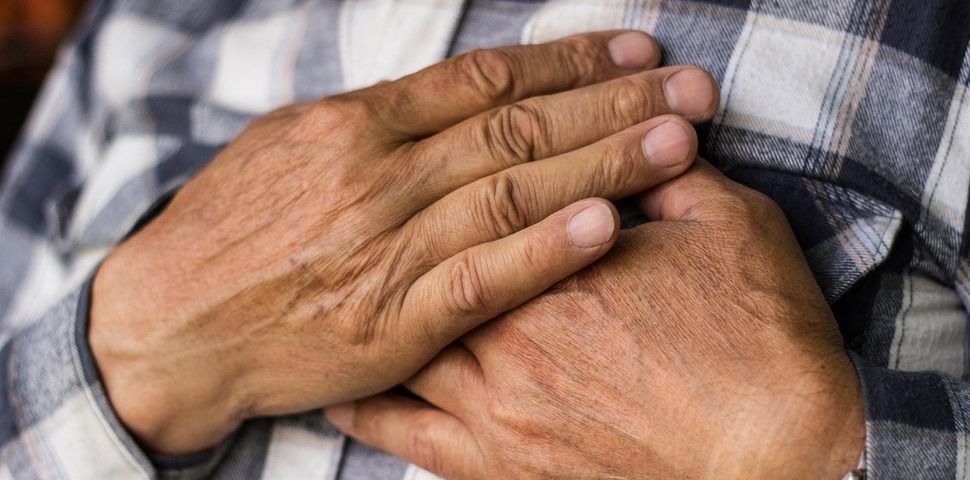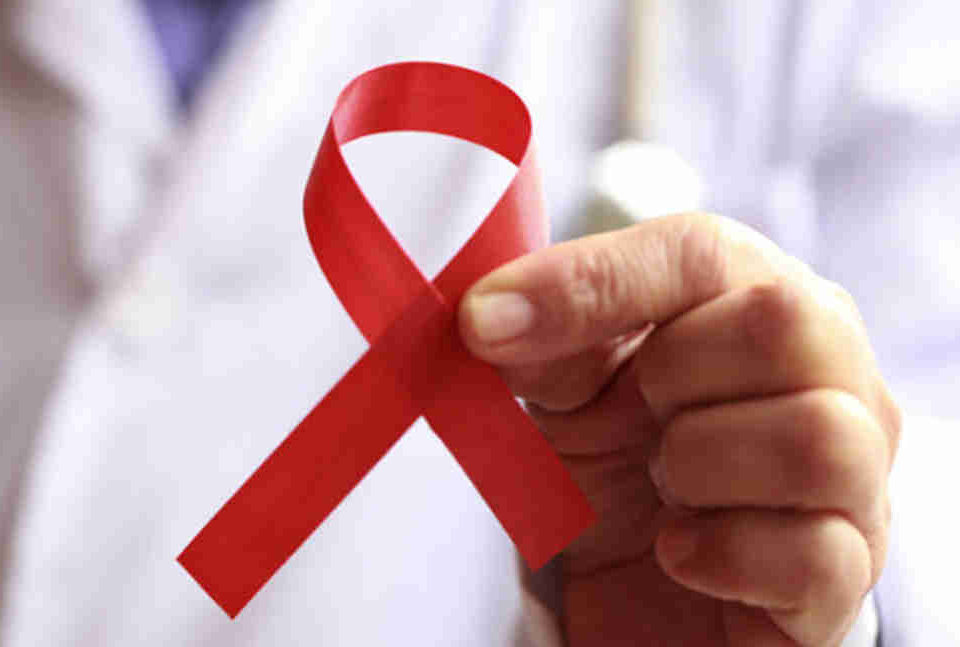Heart disease is the leading cause of death in the U.S., according to the Centers for Disease Control and Prevention. According to CDC statistics:
- 如有疑问,请联系电邮
- customer@ihealth66.com
USNEWS:全美心脏病指南概要

USNEWS:如何规避糖尿病酮症酸中毒的发生!
2019年4月24日
USNEWS:为什么孩子吃饭不好?生理还是心理问题?
2019年4月29日By David Levine
心脏病是美国人的主要死因美国疾病控制与预防中心(Centers for Disease Control and Prevention,简称CDC)的数据。根据CDC统计:
- 美国每年大约有61万人死于心脏病,也就是每4个人中就有一个死于心脏病。
- 心脏病是男性和女性的主要死因。
- 冠心病是最常见的一种心脏病,每年夺去37万人的生命。
- 每年大约有73.5万美国人心脏病发作。其中525,000例是首次心脏病发作,其余发生在已经心脏病发作的人身上。
什么是心脏病?
心脏的工作是把富含氧气的血液泵到全身。但是心脏本身也需要氧气才能存活。当流向心肌的血液严重减少或完全切断时,心脏就无法正常工作。缺氧的心脏部分开始死亡。根据美国心脏病协会的数据,美国人每40秒就会有一次心脏病发作。
心脏骤停vs心脏病
心脏骤停不等于心脏病发作,但两者是有联系的。当流向心脏的血液被阻断时,心脏病就会发作。心脏骤停时,心脏突然停止跳动。正如美国心脏病协会所说,心脏病发作是一个“循环”问题,而心脏骤停是一个“电”问题。
心脏骤停,顾名思义,是突然发生的,通常没有任何预先警告。它是由维持心脏跳动的电流中断引起的。这种紊乱被称为心律失常,阻止心脏向大脑、肺和其他器官供血。患者可能在几秒钟内失去知觉,脉搏可能很少或没有。如果患者在几分钟内没有接受治疗,心脏骤停将导致死亡。
心脏病发作会增加心脏骤停的风险,这可能发生在心脏病发作后或康复期间。然而,大多数心脏病发作不会导致心脏骤停。心律失常还由心肌病(心肌增厚)、心力衰竭和控制使心脏有节奏地跳动的电流的心脏区域受损引起。
心脏骤停时可以通过心肺复苏术和使用除颤器使心脏恢复正常的跳动节奏来重新启动。
心脏病的原因
当为心肌供血的冠状动脉因斑块而变窄时,血液流动就会受阻。斑块是脂肪、胆固醇和其他物质的堆积物。这被称为动脉粥样硬化,有时也称为动脉硬化。血小板会收缩动脉,减缓血液流动。有时,斑块破裂,形成血块。凝块可以完全阻断血液通过动脉流向心肌。
当心肌缺氧时,这种情况称为缺血。如果这导致部分心肌受损或死亡,就称为缺血性心脏病发作或心肌梗死。
动脉阻塞不是心脏病发作的唯一原因。冠状动脉可能收缩或痉挛,导致动脉狭窄,减慢或停止血液流向心脏的一部分。美国心脏协会表示,痉挛的原因尚不清楚。它们既可能发生在表面正常的血管中,也可能发生在动脉粥样硬化患者中。如果痉挛足够严重,就会导致心脏病发作。
心脏病发作的另一种可能的原因是自发性冠状动脉剥离,尽管这种情况非常罕见。这是当动脉壁撕裂或撕裂,导致血液流向心脏的损失。目前尚不清楚导致这种情况的原因,但梅奥诊所表示,有一些风险因素,包括影响人体结缔组织的遗传疾病,如血管性埃勒斯-丹洛斯综合征和马凡氏综合征、高血压、非法使用药物等。
心脏病发作警告信号
不幸的是,动脉粥样硬化本身没有症状。美国心脏病协会解释说,当患有动脉粥样硬化的冠状动脉收缩并阻塞血液流动时,其他服务于心脏同一区域的血管可以扩张,以弥补较弱的动脉。这个扩张的血管网络叫做侧支循环。美国心脏病协会说,它通过向心脏输送所需的血液来保护一些人免受心脏病发作。这也可以解释为什么动脉粥样硬化患者没有提前预警。在心脏病发作后,侧支循环也可以通过增加心肌的血液来帮助其恢复。
心绞痛是心脏虚弱最常见的警告信号。这被定义为反复发作的胸部不适,通常只持续几分钟。心绞痛和心脏病发作不一样,因为心绞痛发作不会对心肌造成永久性损伤。不过,任何无法解释的胸部不适,比如心绞痛,都需要去看医生。
心绞痛有不同的类型:
- 稳定型心绞痛,或心绞痛,发生在运动或情绪紧张时,因为血压和心率增加,心脏难以获得足够的血液流动。
- 不稳定型心绞痛,或急性冠状动脉综合征,可发生在休息或睡眠,往往是意想不到的。美国心脏病协会提示,不稳定的心绞痛可能导致心脏病发作,所以应该作为紧急情况处理。
心脏病的症状
许多人想象心脏病发作就像电影或电视上经常出现的那样:紧锁着胸口的疼痛,然后瘫倒在地。虽然这种情况可能发生,但远非典型性情况。大多数心脏病发作以轻微的疼痛或不适开始。心脏病发作的症状可以持续数小时、数天或数周。而且,与心脏骤停不同,心脏病发作时心脏通常会继续跳动。
美国心脏协会列出了以下可能提示心脏病发作的症状:
- 胸部中心的不适持续了几分钟或消失后又回来。它会让人感到不舒服的压力、挤压、饱腹感或疼痛。
- 身体其他部位的疼痛或不适,如单臂或双臂、背部、颈部、下巴或胃部。
- 呼吸短促,有或无胸部不适。
- 出冷汗、恶心或头晕。
女性心脏病发作的症状
虽然女性也会经历胸痛或不适,但她们更有可能注意到其他一些症状,尤其是呼吸短促、恶心和/或呕吐,以及背部或下巴疼痛。女性往往没有意识到这些症状是心脏病发作的症状,她们认为这些症状是由不那么危险的条件引起的,比如胃酸倒流、正常的疼痛和衰老或流感引起的疼痛。但是心脏病是美国女性和男性的头号杀手因此,他们必须认真对待这些症状。
如何预防心脏病
预防心脏病发作的最好方法是了解自己的危险因素。有些,如年龄(风险随着年龄的增长而增加)、性别(男性比女性风险更高)、种族(非裔美国人、墨西哥裔美国人、印第安人、夏威夷原住民和一些亚裔美国人风险更高)和家族史,你对此无能为力。然而,其他人则直接在你的控制之下。为了降低心脏病发作的风险,美国心脏病协会建议:
- 停止吸烟——如果你吸烟了,马上戒掉。
- 控制血压和胆固醇水平。
- 控制糖尿病。
- 保持健康的体重。
- 从事体力运动。
- 吃有益于心脏健康的食物。
- 控制精神压力。
- About 610,000 people die of heart disease in the U.S. every year – that’s 1 in every 4 deaths.
- Heart disease is the leading cause of death for both men and women.
- Coronary heart disease is the most common type of heart disease, killing over 370,000 people annually.
- Every year about 735,000 Americans have a heart attack. Of these, 525,000 are a first heart attack, and the rest occur in people who have already had a heart attack.
What Is a Heart Attack?
The heart’s job is to pump oxygen-rich blood to the entire body. But the heart itself also needs oxygen to survive. When blood flow to the heart muscle is severely reduced or cut off completely, the heart is unable to function properly. The part that is deprived of oxygen begins to die. That is a heart attack – and according to the American Heart Association, someone in the U.S. has one about every 40 seconds.
Cardiac Arrest vs. Heart Attack
Cardiac arrest is not the same as a heart attack, but the two are linked. A heart attack occurs when blood flow to the heart is blocked. In sudden cardiac arrest, the heart suddenly stops beating. As the AHA puts it, heart attack is a “circulation” problem, and sudden cardiac arrest is an “electrical” problem.
Sudden cardiac arrest occurs, as the name implies, suddenly and usually without any advanced warning. It is triggered by a disruption of the electrical currents that keep the heart beating. This disruption, called an arrhythmia, stops the heart from pumping blood to the brain, lungs and other organs. The person can lose consciousness within seconds and may have little or no pulse. If the person does not receive treatment within minutes, cardiac arrest will cause death.
A heart attack increases the risk of sudden cardiac arrest, which can occur after a heart attack or during recovery. However, most heart attacks do not lead to sudden cardiac arrest. Arrhythmia is also caused by cardiomyopathy (thickening of the heart muscle), heart failure and damage to the areas of the heart that control the electrical currents that keep the heart pumping rhythmically.
A heart in cardiac arrest can be restarted through CPR and the use of a defibrillator to shock the heart back into a normal beating rhythm.
Heart Attack Causes
Blood flow can be blocked when the coronary arteries that supply the heart muscle with blood become narrowed from plaque, which is a buildup of fat, cholesterol and other substances. This is known as atherosclerosis, sometimes called hardening of the arteries. The plaque can constrict the artery, slowing blood flow. Sometimes, the plaque breaks, forming a blood clot. The clot can completely block the blood flow through the artery to the heart muscle.
When the heart muscle is oxygen-deprived, the condition is called ischemia. If that leads to damage or death of part of the heart muscle, it is called an ischemic heart attack, or a myocardial infarction.
A blocked artery is not the only cause of heart attack. A coronary artery may contract or go into spasm, causing the artery to narrow and slow or stop blood flow to part of the heart. The AHA says the causes of spasms are not well known. They can occur in both seemingly normal vessels and in those with atherosclerosis. If the spasm is severe enough, it can cause a heart attack.
Another possible, though very rare, cause of heart attack is spontaneous coronary artery dissection. This is when the arterial wall rips or tears, causing loss of blood flow to the heart. It’s not clear what causes this, but the Mayo Clinic says there are a few risk factors, including genetic diseases that affect the body’s connective tissues, such as vascular Ehlers-Danlos syndrome and Marfan syndrome, extremely high blood pressure, illegal drug use and others.
Heart Attack Warning Signs
Unfortunately, atherosclerosis has no symptoms of its own. The AHA explains that when a coronary artery afflicted with atherosclerosis narrows and blocks blood flow, other blood vessels that serve the same area of the heart can expand to compensate for the weaker artery. This network of expanded blood vessels is called collateral circulation. The AHA says it protects some people from heart attacks by delivering needed blood to the heart. It also may explain why those with atherosclerosis have no advanced warning. Collateral circulation can also help after a heart attack by bringing added blood to the heart muscle to help it recover.
The most common warning sign of a weakened heart is angina. This is defined as recurring chest discomfort that typically lasts only a few minutes. Angina is not the same as a heart attack, because angina attacks don’t cause permanent damage to the heart muscle. Still, any unexplained chest discomfort, such as angina, warrants a visit to the doctor.
There are different types of angina:
- Stable angina, or angina pectoris, occurs during exercise or emotional stress, as blood pressure and heart rate increase and the heart struggles to get adequate blood flow.
- Unstable angina, or acute coronary syndrome, can occur while resting or sleeping, and often is unexpected. The AHA says unstable angina can lead to a heart attack and should be treated as an emergency.
Heart Attack Symptoms
Many people envision a heart attack as it’s often shown in movies or on TV: chest-clutching pain followed by a collapse to the floor. While that can happen, it is far from typical. Most heart attacks begin with mild pain or discomfort. Heart attack symptoms can last for hours, days or weeks. And, unlike with sudden cardiac arrest, the heart usually keeps beating during a heart attack.
The AHA lists the following symptoms that can suggest a heart attack is happening:
- Discomfort in the center of the chest that lasts more than a few minutes or that goes away and comes back. It can feel like uncomfortable pressure, squeezing, fullness or pain.
- Pain or discomfort in other parts of the body, such as one or both arms, the back, neck, jaw or stomach.
- Shortness of breath, with or without chest discomfort.
- A cold sweat, nausea or lightheadedness.
Women’s Heart Attack Symptoms
While women also experience chest pain or discomfort, they are more likely to notice some of the other symptoms, particularly shortness of breath, nausea and/or vomiting and back or jaw pain. Women often fail to recognize these as symptoms of a heart attack, thinking they are caused by less dangerous conditions, such as acid reflux, the normal aches and pains of aging or the flu. But heart disease is the No. 1 killer of women – and men – in the U.S., so they must take these symptoms seriously.
How to Prevent a Heart Attack
The best way to prevent a heart attack is to know your risk factors. Some, such as age (risk goes up as you age), gender (men are at higher risk than women), ethnicity (African-Americans, Mexican-Americans, American Indians, Native Hawaiians and some Asian-Americans have higher risk) and family history, you can’t do much about. Others, however, are directly under your control. To lower your risk of heart attack, the AHA recommends:
- Don’t smoke – and if you do, quit right away.
- Control blood pressure and cholesterol levels.
- Keep diabetes under control.
- Maintain a healthy body weight.
- Engage in physical activity.
- Eat a heart-healthy diet.
- Keep stress under control.





